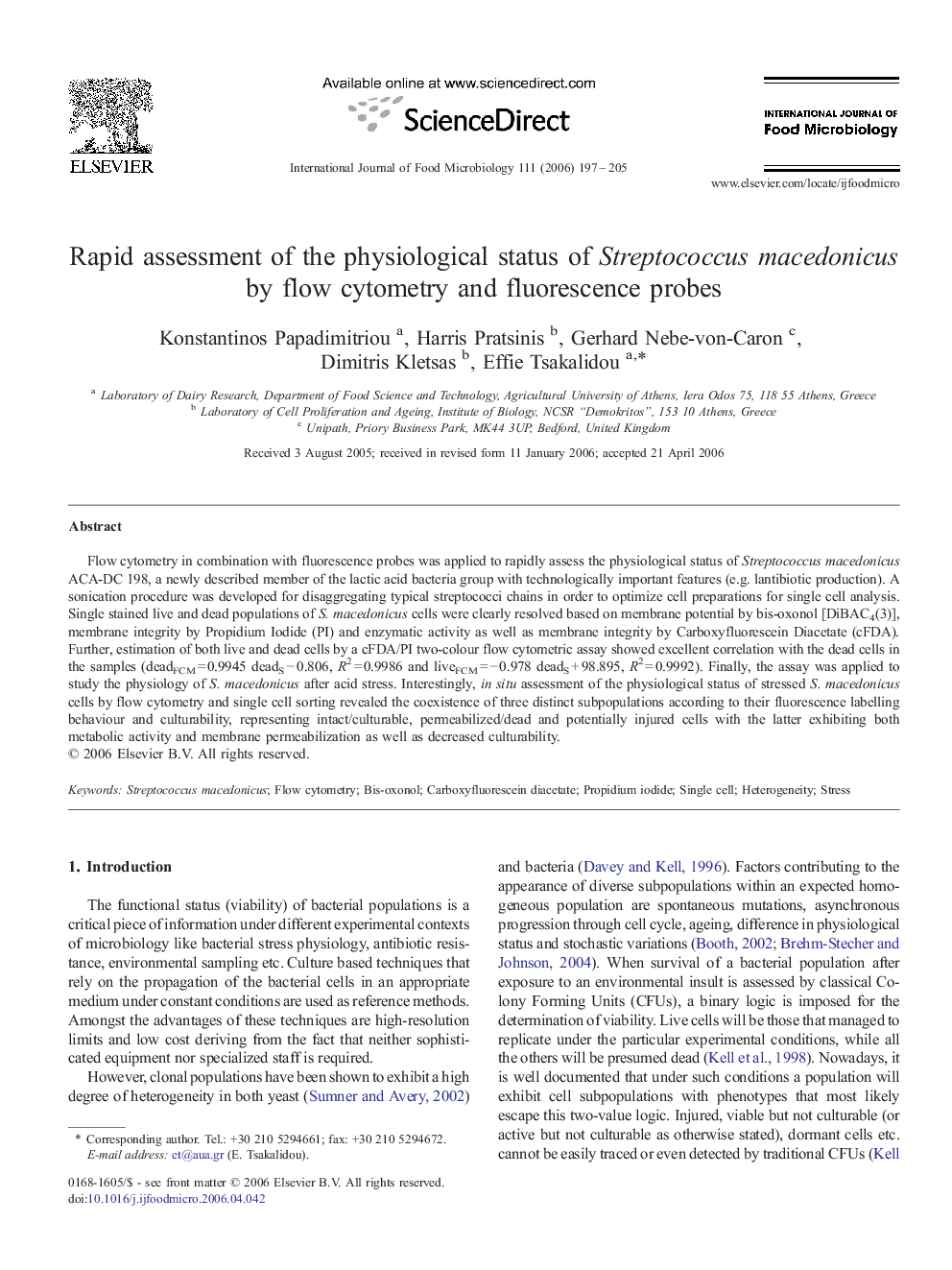| کد مقاله | کد نشریه | سال انتشار | مقاله انگلیسی | نسخه تمام متن |
|---|---|---|---|---|
| 4370130 | 1616760 | 2006 | 9 صفحه PDF | دانلود رایگان |

Flow cytometry in combination with fluorescence probes was applied to rapidly assess the physiological status of Streptococcus macedonicus ACA-DC 198, a newly described member of the lactic acid bacteria group with technologically important features (e.g. lantibiotic production). A sonication procedure was developed for disaggregating typical streptococci chains in order to optimize cell preparations for single cell analysis. Single stained live and dead populations of S. macedonicus cells were clearly resolved based on membrane potential by bis-oxonol [DiBAC4(3)], membrane integrity by Propidium Iodide (PI) and enzymatic activity as well as membrane integrity by Carboxyfluorescein Diacetate (cFDA). Further, estimation of both live and dead cells by a cFDA/PI two-colour flow cytometric assay showed excellent correlation with the dead cells in the samples (deadFCM = 0.9945 deadS − 0.806, R2 = 0.9986 and liveFCM = − 0.978 deadS + 98.895, R2 = 0.9992). Finally, the assay was applied to study the physiology of S. macedonicus after acid stress. Interestingly, in situ assessment of the physiological status of stressed S. macedonicus cells by flow cytometry and single cell sorting revealed the coexistence of three distinct subpopulations according to their fluorescence labelling behaviour and culturability, representing intact/culturable, permeabilized/dead and potentially injured cells with the latter exhibiting both metabolic activity and membrane permeabilization as well as decreased culturability.
Journal: International Journal of Food Microbiology - Volume 111, Issue 3, 1 October 2006, Pages 197–205